Tender meat is all about texture and ease of chewing, influenced by three main factors: marbling, muscle structure, and fat distribution. Here’s a quick breakdown:
- Marbling: Fine streaks of intramuscular fat make meat juicy and tender. The more even the marbling, the better the quality. Cuts like USDA Prime or Wagyu excel in this.
- Muscle Usage: Less-used muscles (like tenderloin) are naturally softer, while heavily used ones (like brisket) are tougher due to more connective tissue.
- Fat Types: Intramuscular fat (marbling) enhances tenderness, while intermuscular and subcutaneous fat contribute less to quality.
For tender cuts, look for fine marbling, soft texture, and USDA grades like Prime or Choice. Cooking methods also matter – quick searing works for tender cuts, while slow cooking transforms tougher ones.
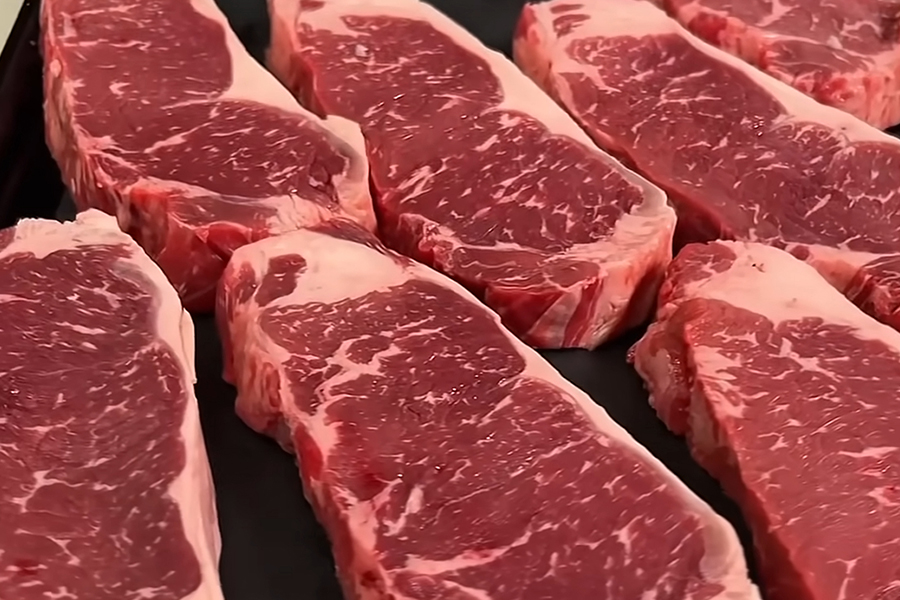
How Marbling Affects Tenderness
What is Marbling?
Marbling refers to the small flecks of intramuscular fat nestled within lean muscle tissue. It’s important not to confuse this with intermuscular fat – the fat found between muscles – which doesn’t contribute to meat quality. The USDA provides a straightforward definition:
"Marbling is white flecks of fat within the meat muscle. More marbling yields a higher grade, because marbling makes beef more tender, flavorful, and juicy."
This definition highlights how the fat woven into the muscle directly impacts tenderness. As the meat cooks, the fat melts, effectively self-basting the meat and locking in moisture. Since fat is naturally softer than muscle fibers, marbling plays a big role in enhancing tenderness.
Why Even Marbling Matters
Beyond just the amount of marbling, the way it’s distributed also plays a key role in meat quality. Not all marbling is the same. Fine marbling – tiny, evenly scattered flecks – melts quickly during cooking, boosting both tenderness and juiciness. On the other hand, medium or coarse marbling, with larger fat deposits, melts more slowly and can lead to uneven textures.
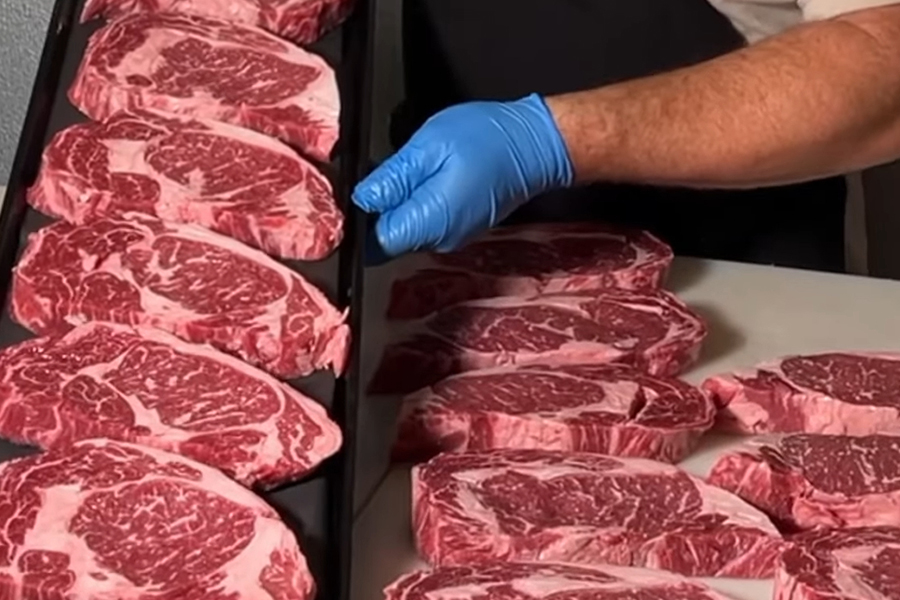
Premium breeds like Kobe and Wagyu are known for their fine, evenly spread marbling. When selecting beef, look for a delicate, swirled pattern rather than chunky fat deposits. This difference in marbling not only affects texture but also impacts USDA grading and, ultimately, your overall dining experience.
How Marbling Quality Affects Your Meat
The USDA grading system places a high value on marbling quality. Cuts labeled USDA Prime feature abundant, fine marbling, while grades like Choice and Select have less. For comparison, USDA Prime tops out at a Beef Marbling Score (BMS) of 5, while Japanese Wagyu can reach an impressive score of 12.
Craig A. Morris, Deputy Administrator of the AMS Livestock, emphasizes:
"Marbling is what gives beef its flavor, juiciness and tenderness."
Take the ribeye, for example – it’s prized for its rich, juicy flavor, thanks to its marbling. The New York Strip, while firmer and more robust in taste, still benefits from fine marbling. Even the flat iron steak, celebrated for its tenderness, owes part of its appeal to this fat distribution.
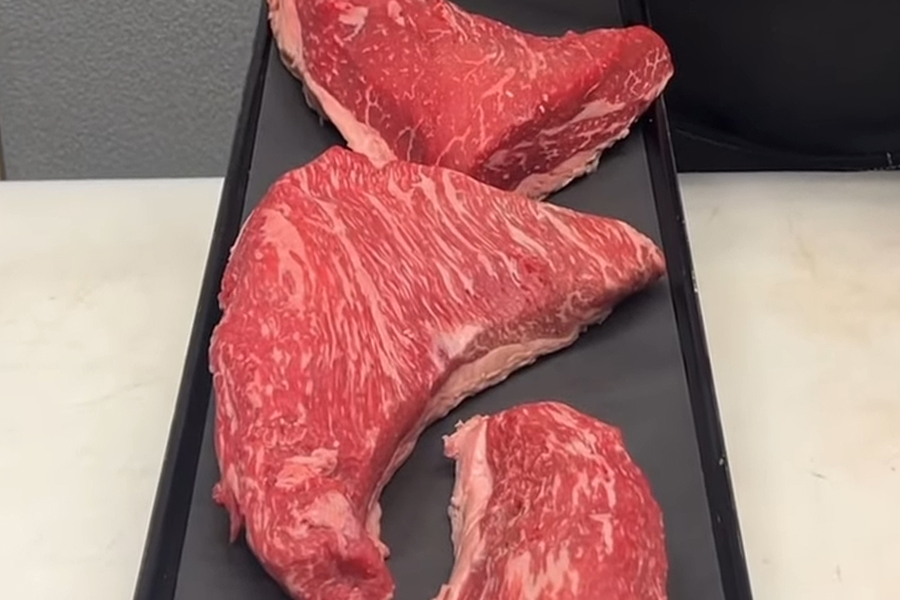
Fuller Consulting explains the impact in practical terms:
"Marbling is important to steak because it adds flavor (the right kind of flavor), juiciness as it melts into the steak when cooking, and tenderness because the fat is much more tender than the muscle fiber in the steak."
If you’re aiming for consistently tender, flavorful, and juicy cuts, choosing USDA Prime or the higher end of USDA Choice is a smart move. Fine marbling makes all the difference when it comes to creating that melt-in-your-mouth experience.
How Muscle Structure Affects Tenderness
Why Muscle Usage Matters
While marbling adds moisture and flavor, the way a muscle is used determines its texture. Where a muscle is located on an animal plays a big role in how tender it is. Muscles that get a workout – like those in the legs, shoulders, and neck – build up thicker connective tissue due to frequent use. On the other hand, muscles that don’t do much work, like the tenderloin (psoas major) and the ribeye area (longissimus thoracis), have less collagen and stay naturally tender.
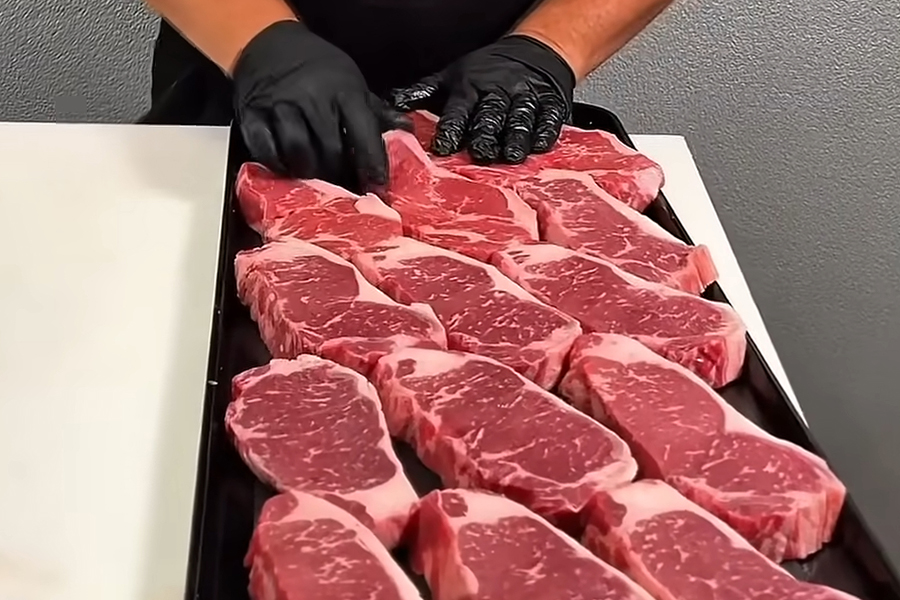
Lightly used muscles tend to have finer textures, while heavily used ones develop coarser fibers. This connective tissue, created by constant use, becomes key during cooking, as its breakdown determines how tender the meat will be.
Connective Tissue and Cooking Methods
The difference in muscle use highlights how connective tissue behaves during cooking. Connective tissue provides structure to the meat, and while collagen only makes up a small percentage of meat’s weight, it plays a major role in toughness. One key component, the perimysium (a type of intramuscular connective tissue), is a significant factor in how tough meat feels.
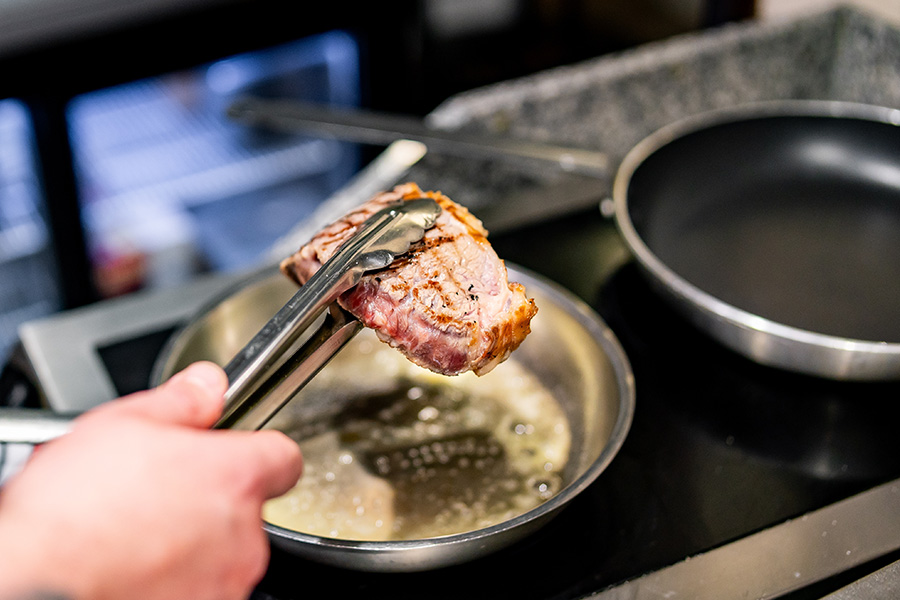
"Connective tissue, primarily composed of collagen, can make meat tough if it’s not properly broken down." – Yankee Flats Meats
Slow, moist-heat cooking methods are the secret to transforming collagen into gelatin, making tougher cuts tender and flavorful. Cuts like chuck, brisket, and round, which are rich in connective tissue, shine when cooked slowly using techniques like braising or roasting. Pressure cooking offers another option, shortening cooking time while keeping the meat juicy. Combination methods that use both dry and moist heat can also work wonders. Ingredients like wine or tomatoes are particularly useful, as their acidity helps break down connective tissues, further softening the meat.
Examples of Tender vs Tough Cuts
Knowing the characteristics of specific cuts can guide your cooking choices. For instance, the tenderloin (psoas major) and ribeye (longissimus thoracis) are naturally low in collagen and famously tender. These cuts are ideal for quick, high-heat cooking methods like grilling or pan-searing:
- Tenderloin: The most tender cut, with barely any connective tissue.
- Ribeye: Praised for its fine muscle fibers and rich marbling.
- Strip steak: A great balance of tenderness and structure.
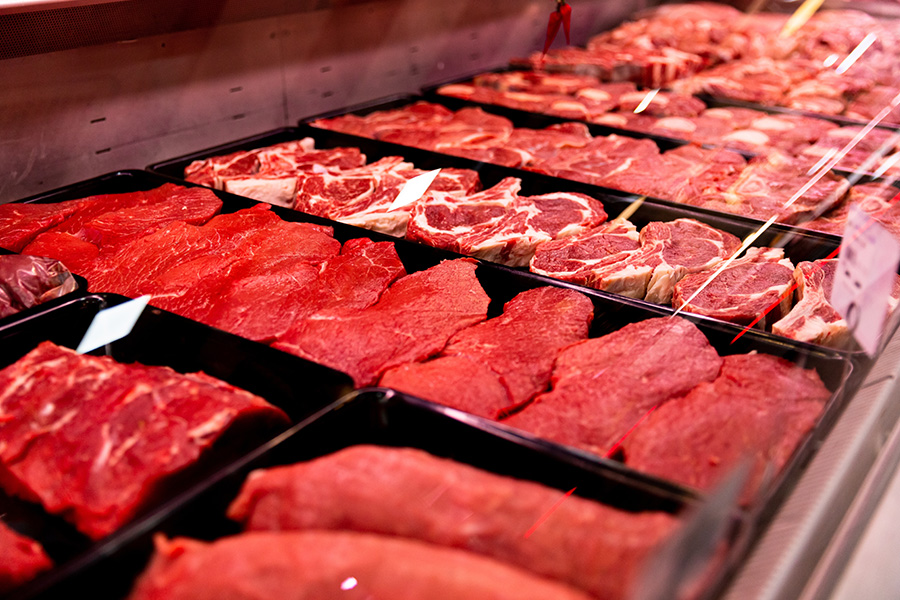
On the flip side, tougher cuts come from muscles that are heavily used, such as those in the limbs (triceps brachii, serratus ventralis, semimembranosus, and biceps femoris). These cuts are packed with connective tissue and don’t do well with fast cooking methods. Instead, they benefit from slow cooking techniques:
- Chuck roast: Taken from the shoulder, it’s loaded with connective tissue.
- Brisket: Found in the chest area, it has coarse fibers built for support.
- Round cuts: Sourced from the rear leg, a muscle group constantly in motion.
For example, a tenderloin can be quickly seared and served medium-rare for a melt-in-your-mouth experience. In contrast, a chuck roast demands hours of slow braising to break down its connective tissue, rewarding you with a rich, tender dish.
Fat Distribution: More Than Just Marbling
3 Types of Fat in Meat
When you look at a cut of meat, you’re actually seeing three types of fat: intramuscular fat (commonly known as marbling), intermuscular fat, and subcutaneous fat. Each plays a distinct role in flavor and tenderness.
Intramuscular fat appears as those fine white streaks running through the muscle. This fat is embedded within the connective tissues, creating the intricate patterns you see in high-quality steaks.
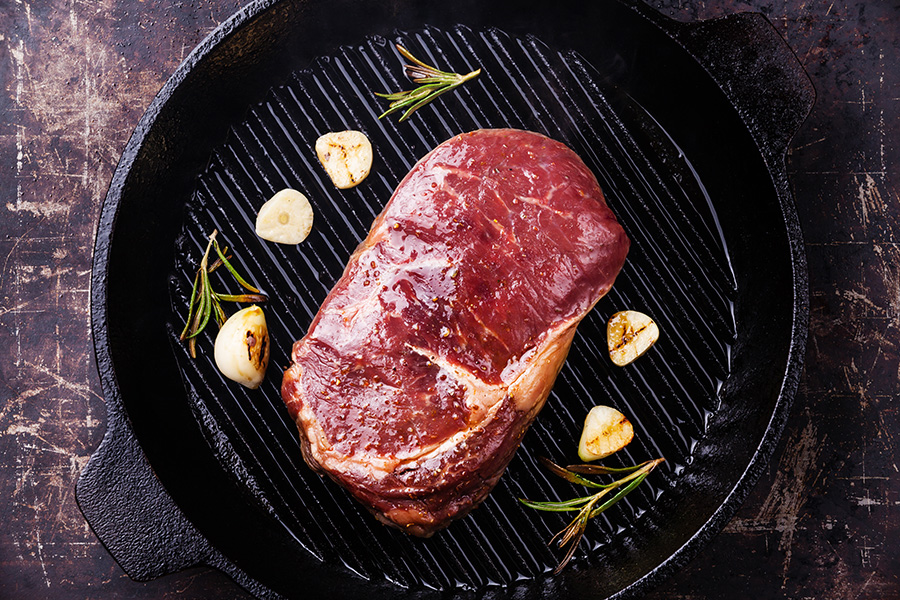
Intermuscular fat, on the other hand, forms thick white layers between different muscle groups. Unlike marbling, this fat sits closer to connective tissue and exposed surfaces, making it more prone to oxidation.
Lastly, subcutaneous fat is the thick layer just beneath the skin. While it acts as a protective barrier during the animal’s life, it behaves differently during cooking. In excess, it can actually lower the overall quality of the meat.
How Each Fat Type Affects Tenderness
Each fat type contributes differently to the eating experience. Intramuscular fat, or marbling, melts during cooking, enhancing tenderness and flavor. Intermuscular fat, however, is tough and rubbery, often leading to off-flavors, especially if the meat is reheated or stored for long periods. This is why butchers frequently trim it before selling cuts.
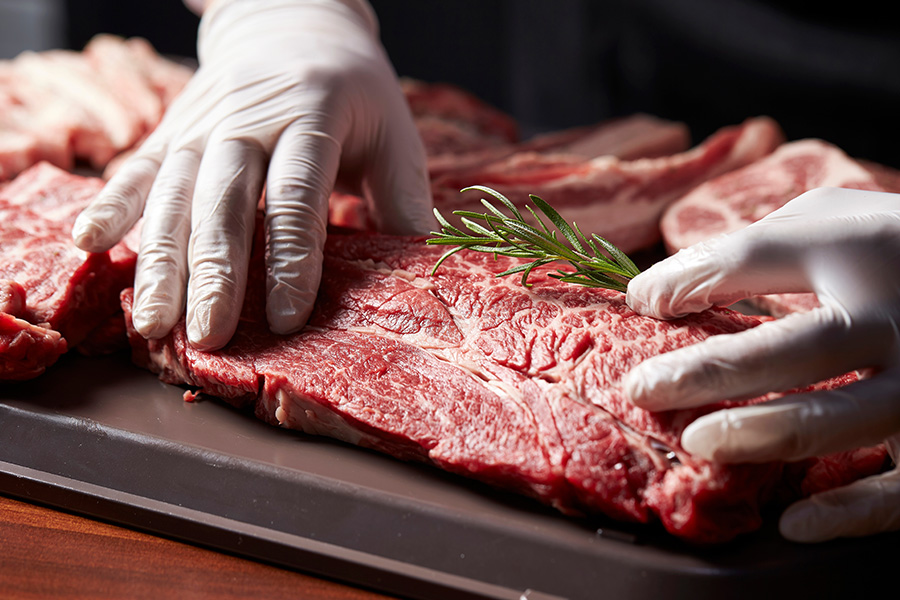
Subcutaneous fat, while helpful in protecting the carcass during the animal’s life, doesn’t do much for tenderness. In fact, when present in excess, it can detract from meat quality. A small amount, however, can act as a shield during cooking, preventing the meat from drying out.
The meat industry often categorizes intermuscular and subcutaneous fats as "waste fat", while intramuscular fat is prized as "taste fat" for its ability to deliver a superior eating experience.
Fat’s Role in Meat Processing
Fat distribution doesn’t just affect flavor – it also impacts how meat is processed. For example, fat coverage influences carcass chilling and enzyme activity during aging. Intramuscular fat, being protected by muscle tissue, is less affected by temperature changes, while intermuscular and subcutaneous fats are more exposed.
In premium beef production, the goal is to maximize marbling while minimizing excess intermuscular and subcutaneous fat. This balance ensures tender, juicy, and flavorful meat without the drawbacks of tough, chewy fat deposits.

Stress management is another critical factor. Both pre- and post-slaughter stress can influence how fat develops and maintains its quality, ultimately impacting marbling and shelf life.
When choosing cuts, pay attention not just to the amount of fat but also to its type and location. A ribeye with fine marbling will provide a much better eating experience than a cut dominated by intermuscular fat. Understanding these differences can help you select meat that delivers optimal tenderness and flavor.
sbb-itb-5ae85c5
How to Pick Tender Cuts
What to Look For in Tender Cuts
When you’re at the meat counter, there are a few key indicators to help you spot tender cuts. Start with marbling – those fine, white streaks of fat running through the muscle. Even, consistent marbling is a strong sign of both tenderness and flavor.
Tender cuts typically come from muscles that don’t do much heavy lifting. Think ribeye, New York strip, or tenderloin – cuts that are naturally soft and flavorful. Another tip? Press the raw meat gently. If it feels soft and supple, it’s likely to stay tender after cooking. Fresh cuts should also have a vibrant color and a moist, firm texture. Steer clear of meat that looks dull, dry, or has excess liquid pooling in the package. High-quality cuts will often have smooth, clean edges, while tougher meat may appear ragged or uneven.

A thin layer of fat on the outside can enhance both flavor and tenderness during cooking. Fat plays an essential role, so don’t shy away from it entirely. Lastly, let USDA grades guide your purchase – they’re a reliable way to assess quality.
Using USDA Grades as Your Guide
USDA grades are a straightforward tool for identifying tender, high-quality beef:
- USDA Prime is the gold standard, with generous marbling that ensures exceptional tenderness, rich flavor, and juiciness. This grade is rare – only about 2–3% of beef qualifies.
- USDA Choice is a step down but still delivers excellent quality. With slightly less marbling than Prime, these cuts are still tender and flavorful, often coming from the loin and rib sections.
- USDA Select is leaner and more uniform in quality. While these cuts may not be as juicy or flavorful, they work well with marinades or moist cooking methods to enhance their texture and taste.
For special occasions, go for Prime. For everyday meals, Choice is a fantastic option. Look for the USDA grade shield on the packaging to make an informed decision. And if you’re unsure, don’t hesitate to ask for help at the counter.
Getting Expert Help at Wild Country Meats
Beyond marbling and muscle structure, expert advice can make all the difference when choosing tender cuts. At Wild Country Meats, the butchers are seasoned pros who know their way around every type of meat and cut. They can help you find exactly what you need, whether it’s a classic favorite or a hidden gem.
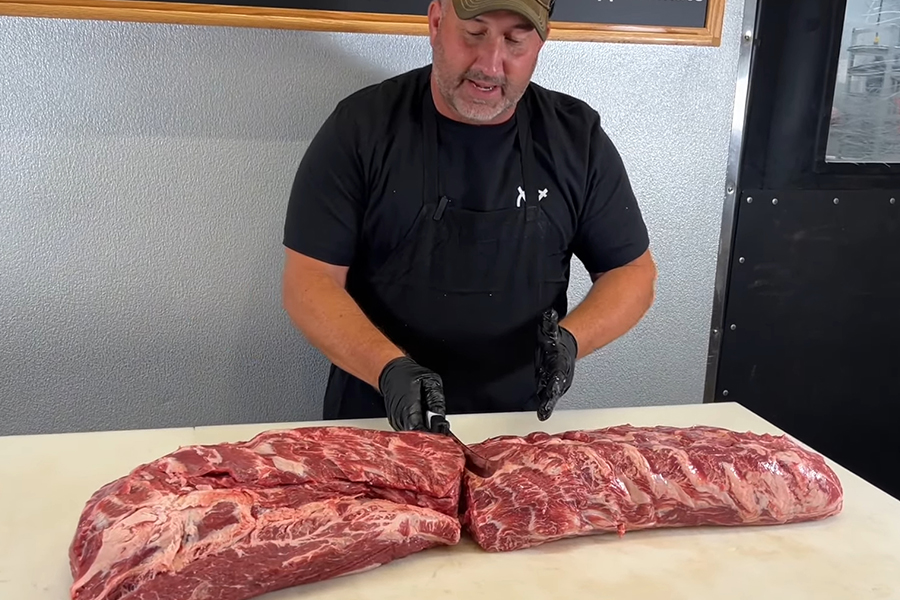
Feel free to ask questions. Want to know which cuts are the freshest? Curious about where the meat comes from? Need advice on how to cook a specific cut? Their team can guide you toward options that fit your needs and budget. They might even suggest lesser-known cuts that deliver amazing tenderness and value. Plus, they can offer tips on portion sizes, storage, and preparation to ensure your meat stays in top condition until it’s time to cook.
"We’re the experts. Use us!" – Jered Standing, Owner of Standing’s Butchery.
Building a relationship with your butcher can elevate your shopping experience and help you discover cuts you might have otherwise overlooked.
Ranking Cuts Of Steak From Toughest To Most Tender
Key Points About Meat Tenderness
The tenderness of meat boils down to three main factors: marbling, muscle structure, and fat distribution. Let’s break these down:
Marbling refers to the fine white streaks of fat running through the muscle. These intramuscular fat streaks not only enhance flavor but also play a major role in keeping the meat tender as it cooks.
Muscle structure is influenced by how much the muscle is used. Cuts from muscles that do less work tend to have fewer tough connective tissues, making them naturally more tender.
Fat distribution includes three types: intramuscular (marbling), intermuscular (between muscles), and subcutaneous (under the skin). While intramuscular fat gives meat that melt-in-your-mouth quality, intermuscular fat can sometimes feel rubbery and less enjoyable to chew.
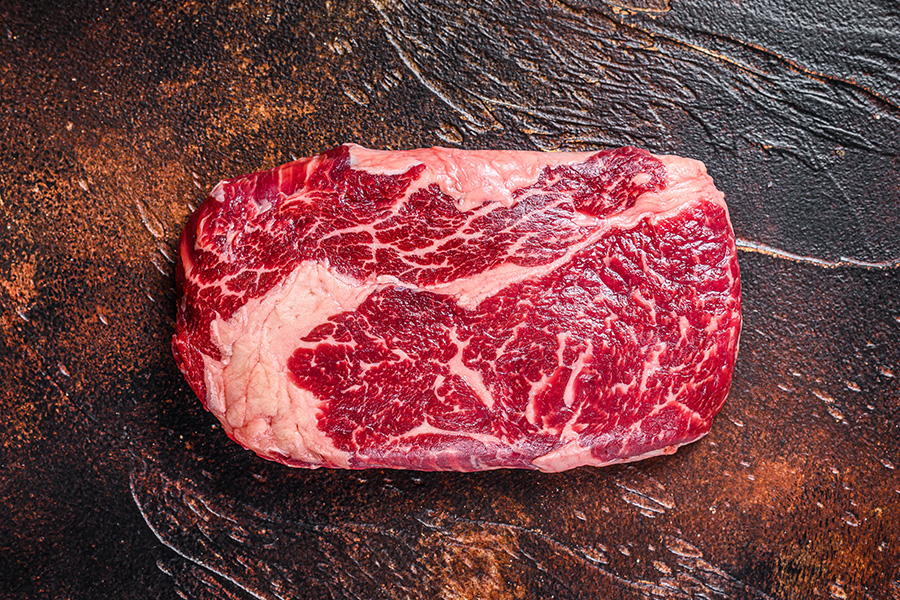
"Marbling represents more than visual appeal or luxury; it is the biochemical signature of an unstressed animal in energetic abundance. It arises only when hormonal conditions favor insulin-mediated glucose uptake and deposition of unsaturated fats directly into muscle tissue."
The USDA grading system helps identify quality based on these factors. Prime grade is the gold standard, offering the highest marbling content. Choice and Select grades follow, with varying degrees of tenderness and quality. These ratings make it easier to pick the right cut for your needs.
At Wild Country Meats, their expert aging process and USDA-inspected facilities ensure consistent quality and tenderness. They take pride in their transparency, tracking each animal with photos and identification numbers, so you always know exactly what you’re getting.
"We don’t seek to satisfy our customers. We seek to amaze them." – Chris Gabriel
Stress can negatively affect meat quality by altering the type and distribution of fat, as well as the flavor. Whether you’re eyeing a richly marbled ribeye or a leaner cut for slow cooking, understanding these principles helps you make better choices and sets you up for a perfect meal.
FAQs
How does the USDA grading system help identify tender cuts of beef?
The USDA grading system serves as a helpful tool for picking tender beef. It assesses meat based on two key factors: marbling (the fat dispersed within the meat) and maturity (the animal’s age). Higher grades like Prime and Choice have more marbling, which contributes to better tenderness, juiciness, and flavor. On the other hand, Select grade is leaner, making it less tender but well-suited for slow-cooking methods.
If tenderness is what you’re after, aim for cuts labeled Prime or Choice. These grades are perfect for grilling, roasting, or pan-searing, as they highlight the meat’s texture and flavor beautifully.
What are the best cooking methods to make different cuts of meat tender?
To achieve the perfect tenderness in meat, it’s all about pairing the right cooking method with the cut. Tender cuts – like ribeye or tenderloin – shine when cooked quickly at high heat. Methods like grilling, pan-searing, or broiling seal in the juices and bring out the rich flavors without risking overcooking.
On the other hand, tougher cuts – think brisket or chuck roast – benefit from a slow and moist approach. Techniques like braising, stewing, or slow roasting at lower temperatures break down the connective tissue, transforming these cuts into melt-in-your-mouth dishes packed with flavor.
By matching the cooking method to the cut, you can make every piece of meat a standout, whether you’re whipping up a quick dinner or serving a comforting family favorite.
Why should I know about the different types of fat in meat when picking a cut?
Understanding the types of fat in meat can make a big difference when it comes to picking the right cut for your dish. Intramuscular fat, commonly known as marbling, plays a key role in adding tenderness and boosting flavor. This makes cuts like ribeye or New York strip perfect choices for those who enjoy rich, juicy meat. Meanwhile, external fat can act as a moisture barrier during cooking, though it’s often trimmed off before serving.
Recognizing how fat impacts the texture, juiciness, and taste of meat helps you choose the best cuts for grilling, roasting, or slow cooking. It’s all about matching the cut to the cooking method for a mouthwatering meal.

